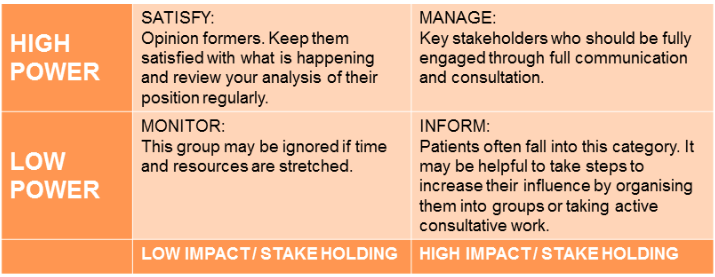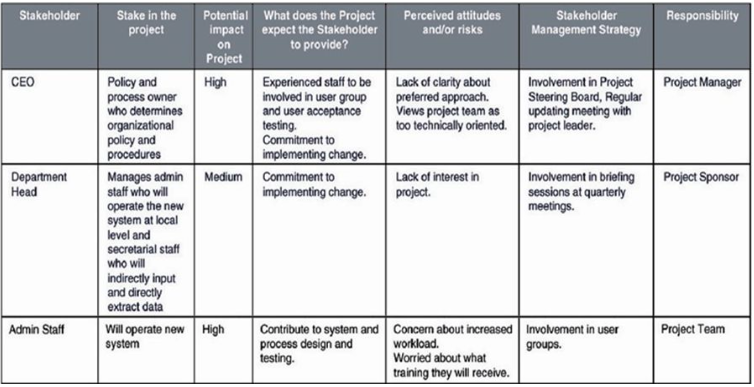How to do Stakeholder mapping and perform Stakeholder Analysis?
Stakeholders are the influencers with vested interest in a project. If you can influence a project in any way or are affected by its execution then there is a high chance that you will have interest in the success of that project and you are called a stakeholder. When it comes to organizational projects or organizations themselves, many times students confuse between stakeholders and shareholders. Shareholders are the individuals or entities with rights on the project to certain level as they assume a part of ownership while stakeholders can include everyone in the environment who can affect or get affected by a project. A sponsor of the project would be both the stakeholder and a shareholder but the staff working in the project management organization would only be a stakeholder unless he or she holds some stocks of the organization.
Why are stakeholders important? Stakeholders are influencers and influences can be both positive and negative. You keep them happy and eliminate the possibilities of negative influences. Another reason why you would be interested in engaging them positively is that most stakeholders are the final users of any product that would come out as the outcome of your execution so if you want your project to be successful, take care of the needs of stakeholders.
What is Stakeholder mapping? It is a way to understand who your stakeholders are and what do they expect from a project. By mapping them, you actually classify them into different categories of influence so that based on that you can take a decision on the types and levels of engagement they would require to remain positive about your project. Power/Interest grid is the common tool used as the foundation for this classification which identifies stakeholders based on their level of interest in the project and the level of influence they have.

- Low Influence/Low Interest: This group of stakeholder may not have any significant influence or even interest and thus, can be ignored or just kept monitored to ensure they remain positive. Support staff in any organization which is involved in a project execution may not have any direct association with the project and thus, can be called into this category.
- Low Influence/ High Interest: Take an example of patients in a hospital that is planning to install a new software for managing its staff. The patients would be highly interested in the project as it would affect the services of the hospital and in turn affect how they are served. However, they do not have any say on how the software be developed. These types of stakeholders may be kept informed about the project and its changes including the highlights of how the change would affect them. Influence of such stakeholders can be increased by taking them into a consultative work.
- High Influence/Low Interest: Industry experts or consultants may not have much interest in your project but anything they say can directly affect the reputation of your project and thus, they have to be kept satisfied. They may be consulted or shown consideration in different ways to ensure their engagement.
- High Influence/high Interest: Project sponsor, project management, the team, shareholders, and major decision makers on any project have both interest in the success of the project and a direct influence on it. Thus, they come into high influence-high interest category and have to be effectively managed with optimized involvement on your project.
- What resources are controlled by these stakeholders?
- What are the top motivational factors?
- What is the emotional interest or appeal?
- Is the stakeholder a supporter or non-supporter?
- What is the level of impact of project on the stakeholder?
- What and how should they be communicated?

As the headings suggest, the project manager has recorded the stake of the stakeholder on the project and have analysed the stakeholder on the basis of his or her impact on project, expectations, attitudes, and have designed a management strategy accordingly. To build this matrix, you need to understand your stakeholders so once you have them identified, talk to them and drill out the information you need to take decisions on engagement, communication, and management. Here are a few things you can do to simplify your stakeholder analysis and engagement process:
- Identify needs of your stakeholders and address them through communication or actions if they are significant and can alter the perceptions of stakeholders if not addressed sufficiently
- Keep the high interest and high-power stakeholders closely engaged throughout the project by keeping them always informed, consulting them in important decisions, and monitoring their perceptions and actions.
- When encountered with conflicts of interest between different stakeholders, take a decision based on what is best for the project and ensure that they are communicated with significance of your decision and are convinced to agree
- Any negative influencers must be spoken to and their concerns should be addressed especially if they are in a high influence category



